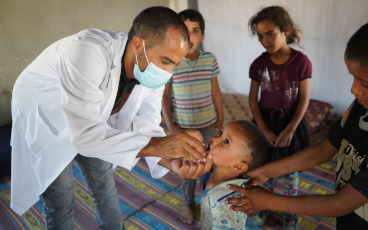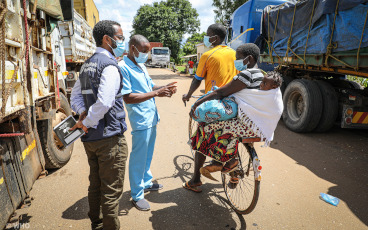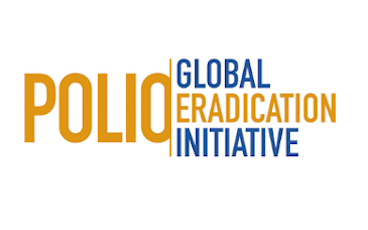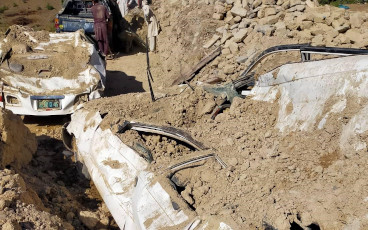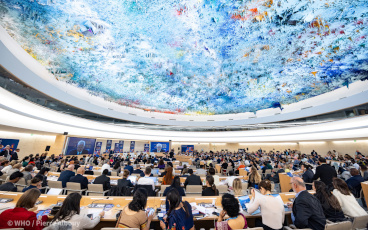“We Are So Close To Success”
At the end of four years as Director of the Global Polio Eradication Initiative, Dr Hamid Jafari reflects on twenty years of experience, the lessons learned and what it will take to finish the job.
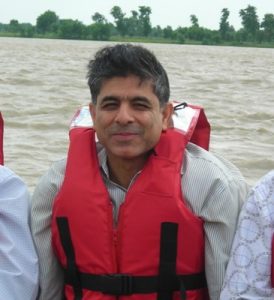
Hamid Jafari in India in 2007, crossing a monsoon-swelled Ganges in Bihar to visit remote communities.
The Global Polio Eradication Initiative is saying goodbye this month to Dr Hamid Jafari, Director of the programme since 2012. Here, he reflects on his experiences from the past 20 years.
In 1995 I went to Pakistan to investigate an outbreak of polio in Punjab. That’s when it just hit home to me what a devastating disease polio is. These beautiful young babies and children were brought to me all dressed-up by their parents who hoped that somehow I would be able to cure them. But they were paralysed for life, despite the fact that they could have been protected with a simple vaccine. That was a real turning point for me to get engaged with polio eradication.
I am driven by the idea of equity; that you have to reach every single child, and that once you are done the benefits accrue forever. To have the opportunity to play a role in making public health history by eradicating a disease was very motivating.
But also once you are part of a workforce that is fighting a war, you can’t abandon your troops. You have to be right there, with your sleeves rolled up, taking part in the fight. It has been important to me to make sure that the sacrifices made by so many along the way were not made in vain; you have to contribute your best efforts to reach eradication, for them.
Some of my most memorable experiences came from my six years as manager of the National Polio Surveillance Project in India. At a time when the country was really struggling to stop the poliovirus, I witnessed ordinary people doing extraordinary things to protect children from polio. It was very motivating and inspiring to see what people would give of themselves for their communities, for children.
The first factor has been resolute perseverance in the face of apparently insurmountable difficulties. This programme has had more than its fair share of extraordinary challenges, and yet we have never given up.
Commitment to engaging people has been important, from parents to community leaders, health workers to heads of state and donors. This is only possible if you first make the effort to understand their point of view, and build their trust.
In the 1990s, there were many countries still polio-endemic or facing outbreaks. We were still figuring out what it would take to stop polio where health infrastructure was extremely weak and densely polio endemic. We had yet to realise the things that would eventually enable us to make real breakthroughs: taking the vaccines to people’s doorsteps, reaching the most remote children and constant vigilance through surveillance.
Today, the world is a very different place. Eighty percent of the world’s population live in regions certified to be polio-free, and once Africa hopefully achieves certification in a year and a half, that percentage will increase. We have expanding environmental surveillance and faster laboratory testing methods giving us a much clearer picture, and the way we now understand and respond to outbreaks has dramatically improved. There are still significant challenges ahead; but we are much better equipped to face them now than in the past.
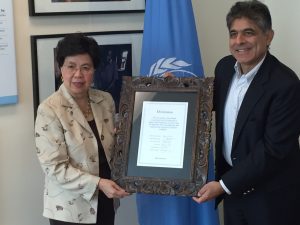
Dr Jafari and the Director General of the World Health Organization, Dr Margaret Chan, hold the certificate declaring the eradication of wild poliovirus type 2 in September 2015. © WHO
The boost in confidence given by successfully stopping to countries and everyone else involved is remarkable. It shows everyone involved that collectively, they can do so much more. Success in public health breeds more success; I saw that happen in India, and it is happening in Nigeria right now. Governments, communities and partners are energized to take on new challenges because they are riding on the momentum of polio eradication.
Moving forward, ensuring that the legacy of the poliovirus surveillance system is sustained will be absolutely key. Surveillance is the basis of any public health programme, and we have a real opportunity to transition the systems and assets of polio eradication to support emerging global public health priorities, now and in the future.
We have worked very hard to access the most hard-to-reach children. Other programmes can learn from our experiences to increase the equity of access to healthcare, both by improving programmes and building trust with the populations we seek to serve.
Thirdly, we are, in this programme, stewards of two very important values. One is the trust of our donors, and the other is the trust of communities and families. It is very important that we take this trust seriously, and hold ourselves accountable to it. We have invested a lot in accountability, because if we lose the trust of our donors or of communities, we lose everything. This has made a big difference.
This programme has never been free of challenges; but it has a long history of overcoming those challenges. We are so close to success. There are challenges, and more will come; but just keep looking for ways to overcome them, just as they have been surmounted in the past. I am leaving with a great deal of optimism and confidence in the staff and leadership of the programme – we are close to success and it will be achieved.
Ultimately, there is no magic to polio eradication. You just have to get to all the kids and vaccinate them, which is an enormous challenge, but we have never given up; nothing is insurmountable.
It is yet to come. It will be when all poliovirus circulation is stopped globally. That will be my proudest moment.


